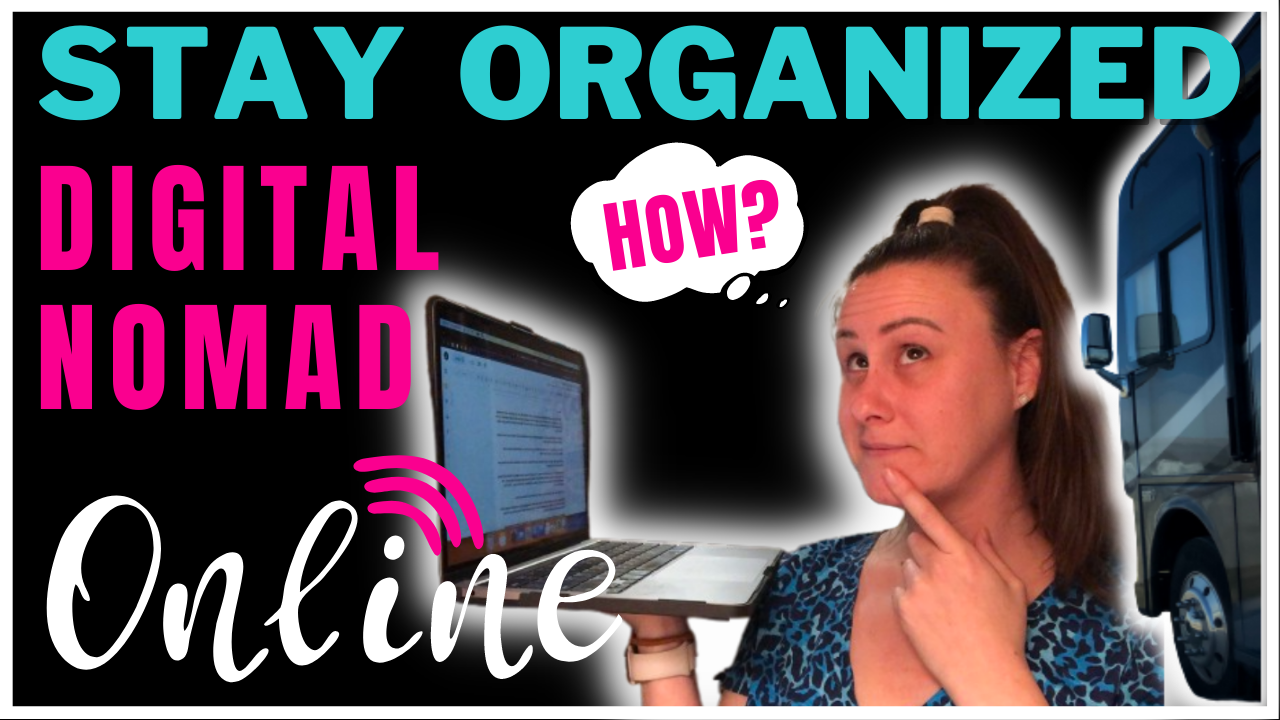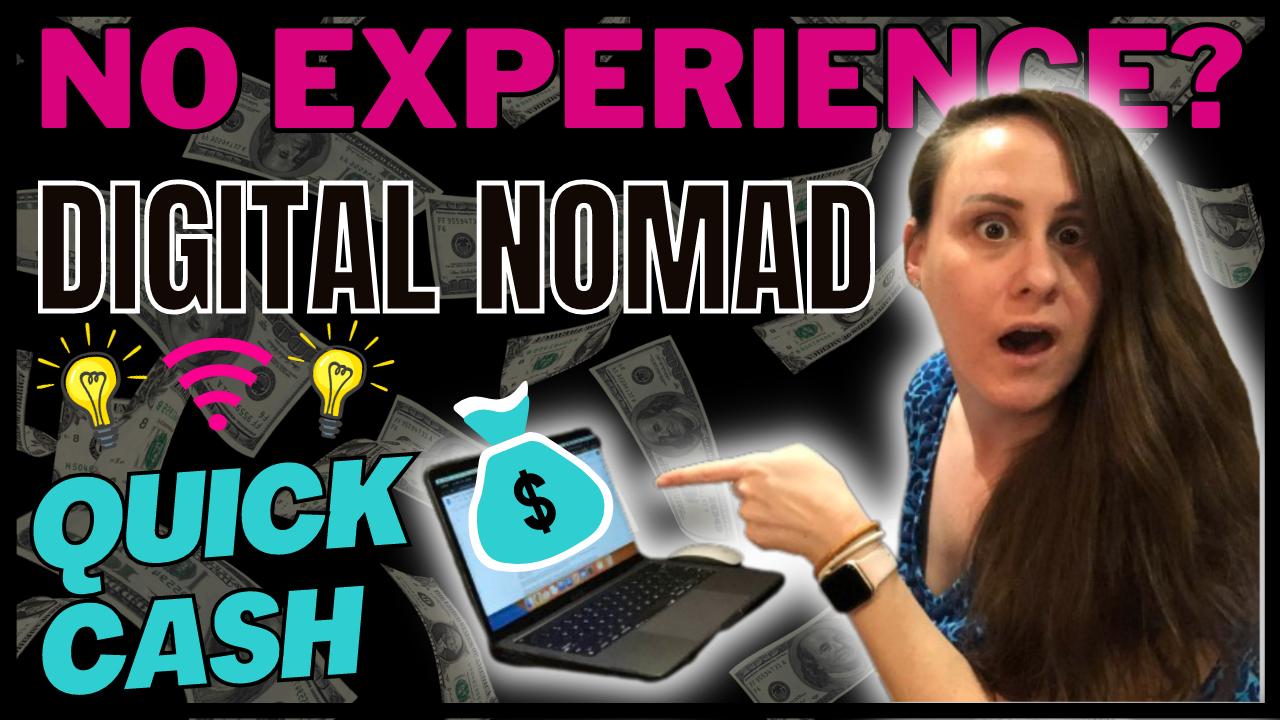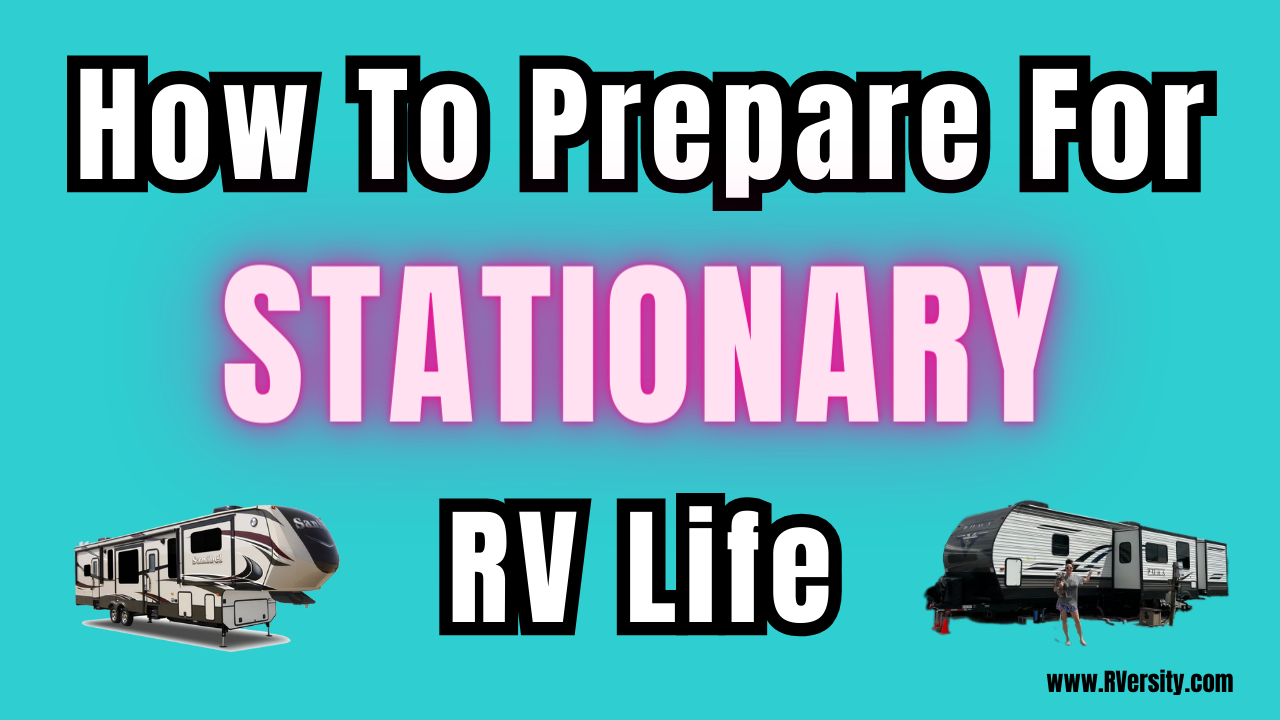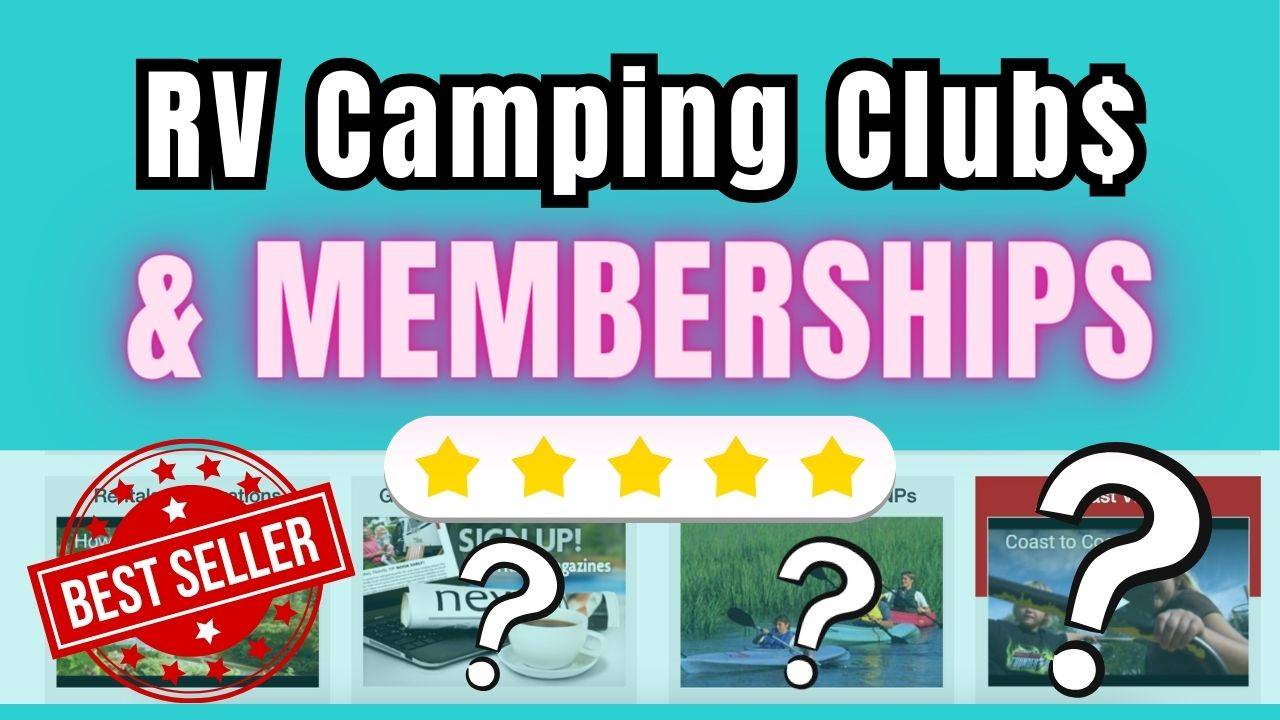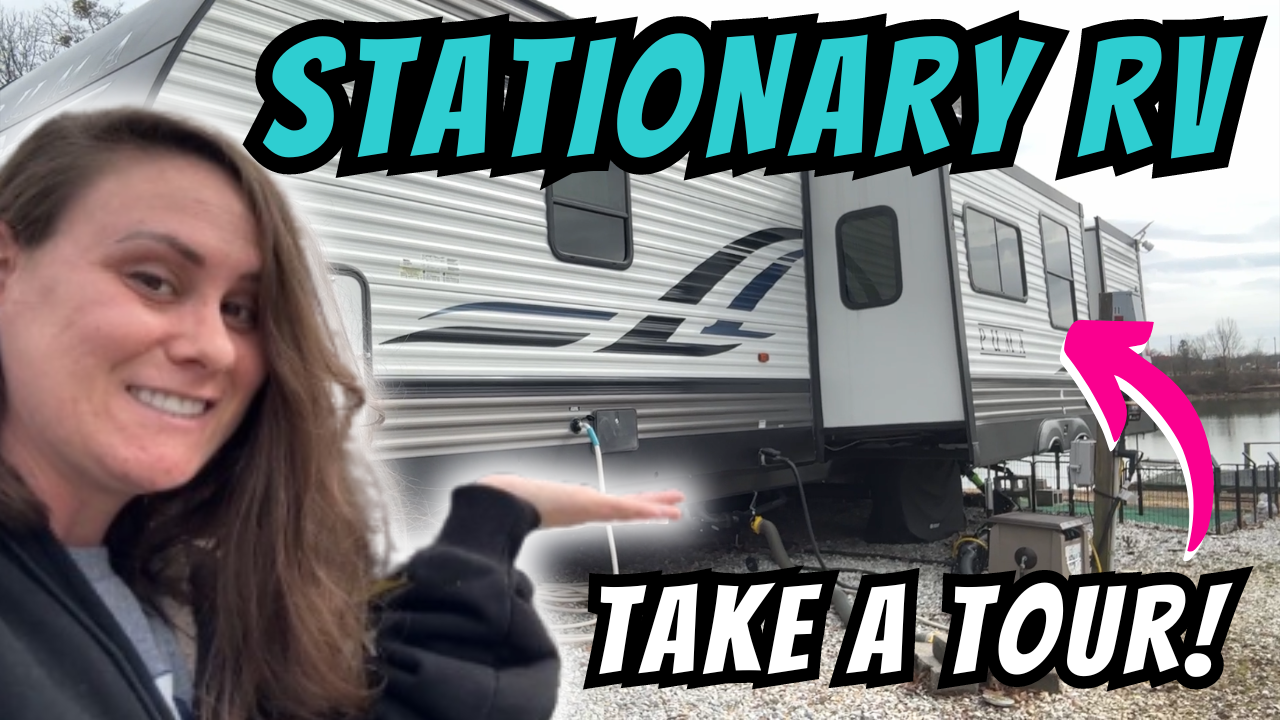My Digital Nomad Budget Advice for Beginners: 3 Steps to Create a Budget and Prepare for RV Life!
I cannot tell you how many emails, comments, texts, phone calls, you name it that I’ve gotten today or even this week alone, about people that tell me they have a bad relationship with money and it is stopping them from starting their RV life or stopping their RV life and digital nomad dreams. If you feel like you have a bad relationship with money or that your finances are holding you back from becoming a digital nomad and starting your RV life, then this video is for you.
I’m breaking down and telling you my three simple steps you need to take to get your finances in order so that you can become an RVing digital nomad and live that dream life on the road working remotely. And so you never have to worry about running out of money or going broke or if you can afford RV life again.
So if you said, oh, I need to make more money, that’s gonna be the solution. I can tell you making more money isn’t always the solution. You might need to know where your money’s going in order to fix the problem for you. Before you worry about making more money. Make sure that you’ve sat down and done these things, which is creating a budget. In this video, I’m giving you three steps to actually do that.
This is not a video about my digital nomad or RV living expenses or cost, anything to do with that RV budget ,expenses, cost, because I’ve made tons of videos about that. This is how I would create a budget even before I started RV Living. But even after I’ve started RV Living, I’ve taken all those fun videos and put ’em in an amazing playlist that you can watch. After this video is over.
FINANCE PLAYLIST:
https://www.youtube.com/playlist?list=PLWzgbBKwktuyv8-mzLAMoHKXmKt8z9W_v
In case you’re wondering who I am and how I know what I’m talking about and you don’t know, I’m a story. I’m blogging brandi, I’m an ex corporate Kool-Aid drinker. I actually quit my job in finance from Bank of America Merrill Lynch. Started a business and then ended up in an rv. Like I said, if you don’t know my story, that’s how I’m actually teaching you here in my RV about budget and finance and all that. If you haven’t subscribed, please subscribe to this channel and hit the bell icon. You’re notified each and every time I publish if you can relate to me.
I am teaching others how to do the same thing over at RVersity. I break this down for you, and I’ve actually showed this strategy to some students.
They have paid off over $20,000 in debt. They have, you can say, either saved hundreds of dollars a month or made hundreds of dollars a month after they’ve gone through these steps. It depends on how you look at it. The glass half full of the glass half empty perspective. So many things that can come from this. I’ve even had people take their credit scores up from sitting down and looking at this almost a hundred points, 99 points in five months.
There’s money that you may not know that you’re spending, even if you don’t have a phone, a computer, or anything else, which you should if you’re a digital nomad, which I went through in one of my prior videos about getting set up in all your essentials and how I stay organized, which you can watch after those videos over.
WATCH >> My RV Remote Work Setup & Must Haves for Digital Nomads!
WATCH >> How I Stay Organized Working Remotely in an RV & Traveling (on the road as a Digital Nomad!)
You need to know, here’s how much money I have going in, here’s how much money I have going out. And you can put this on paper so you don’t have to have a computer. I’m breaking this down like as simple as I can. So think about like budget basics. So let’s dive into the three steps that you wanna take. And you might wanna get a pen and paper if you don’t already have one so that you can follow along.
EXPENSES
First thing that I would do if I was trying to create my budget, write down my expenses, I wanna go through and I wanna write down all of my expenses that I have incurred. The best way that I’ve found to do this is to go through your bank statements, online transactions, all of your daily, monthly, annual living expenses you wanna put on here. Think about all of the expenses that you might have. It could be your cable and wifi, your car payment. It could be your insurance payment, it can be your house payment, it could be your RV payment. Whenever you get your rv, all of your expenses that you have, if you look at all your statements, all your transactions, your bank, your credit cards and say like, okay, this is what I’m spending my money on, this is what you’re going to write down and put here.
So if you’re going to Target or Walmart or Dollar General, it needs to go on here and you don’t wanna duplicate. So like if you’re putting something on say, like a credit card, you wanna break down and say, look, this is how much money is going towards living expenses versus bills and utilities and things like that. You wanna put all of your expenses down on paper. Those are both your needs and your wants that you’re spending money on. You have to figure out like where your money’s going in order to find a way to fix where it’s going. For instance, one of my clients was spending money on a credit card and then they were spending money at like the Dollar General and Walmart and just buying like all their little necessities. But when we put it down on paper, they were spending like $500 a month on random stuff and I was just like, do you really need all those things?
And even though they’re discount stores, they’re not always the best deal wants versus needs is key. And then writing everything down, you’re gonna write down all of your expenses. That’s the first thing.
INCOME STREAMS
Now, the second thing that you’re going to want to do, write down your income. You need to know how much money you have coming in to your bank account and where it’s coming from. So you need a take second to write down all your income streams and think about where your money’s coming from. So like your paycheck, it could be a disability check, it could be a pension check. And then you wanna add up your assets. So like your checking account, savings account money that you have like already sitting around investment account, 401k, how much money do you already have sitting in savings, an investment account versus like how much money do you have coming in?
So you wanna take your income, your income plus your savings because income is essentially something that’s productively happening. Your savings and investments are kinda like stagnant money. What you’re trying to figure out is okay, all your expenses and also in your expenses, you wanna be making sure that you’re writing down, not like, oh, I owe $5,000 on a charge card or, or whatever. I’m gonna show you where, where to put that here in just a second. But how, what’s your minimum payment on that charge card or minimum payment on your student loans? Minimum payment on your electric bill, which your electric bill’s probably your full bill. I’m gonna show you a little bit more of that breakdown. So all your expenses like today, everything that you have to pay for and then all of your income plus your savings, you wanna have all of that out of your expenses, out of your income and savings.
Also, when you’re thinking about income, I want you to think about any assets that you might have, your car, your house, your belongings. When you think about when they say like what are celebrities worth? It’s normally all of their assets. Oh, they own this house in New York and they have another house over here in California. If you added those things up, plus their cars and the amount of money you think that they’re making from like these movies or whatever, what are they worth? That’s not really like how much money they have in their bank accounts when they say like what a celebrity’s worth or what a person’s worth. It’s not really that per se. Your assets are also part of like your income and savings. And when I think about like if I had to liquidate my life right now, what do I own?
Like I could sell my car, my car’s paid off, but like even if you owed on your car, you might still have a little equity in it. So that’s why I say like think of those things. So this is like putting yourself on paper, sort of like a financial plan, but this is what I’m worth on paper, where my money’s coming in and going.
CREDIT & DEBT
The third thing that you wanna do to write down your credit and debt, anything that shows up on your credit reports, but you wanna go through your credit card statements. Think about also student loans, car loans, personal loans. So looking at your credit report is a really good way to find this. If you pull up your credit report, I tell all of my students to go to experian.com and also creditkarma.com. That way you know your Experian credit score and report and what they’re all reporting about you on Credit Karma.
You know your TransUnion and Equifax credit reports. So you wanna see what’s all out there under your name. And if they’re saying like, oh, you didn’t make payments on certain things or if your credit score’s good or it could be a bad credit score, but it could be cuz you don’t have any credit. But you wanna know if there’s something out there in your name, especially if you’re gonna be like buying an RV or applying for a credit card and you do need credit. Finance is your friend, cash is king. Keep that in mind. Check your credit card statements, look at your credit reports. Then you’ll want to track things like your total balance. So when I’m thinking about credit cards in step three, I wanna make sure that I write down things like the total balance is the first things, the total balance like owed on the credit card or on the loan.
And then the other thing that I want is to know my minimum payment. What’s the minimum that I actually have to pay on this credit card or loan each month? And this one is what’s really important for what you wanna put over on your expenses report. So that minimum payment is what you need to think about when you’re thinking about your expenses. Think about what I owe minimum payment. So if everything stopped today, what money am I spending or do I have to spend? So even if I don’t spend any more money, like what? What’s going on for your credit? Total balance, minimum payment due date, the date that the payment is due. So like if your payment’s due on the first or the 15th of the month, like I like to look, I put this in a spreadsheet and I teach all my students to actually put this in a spreadsheet.
I call this my budget spreadsheet . And I give to all my students and I’m like, Hey, have you filled out your budget spreadsheet? So they show it to me and I’m able to see like, oh, that’s where your money’s going. Or figure out like how much runway money they have until they run out of money or how long they can last if they lost their job tomorrow or if they decided to just quit and embark on their RV journey. This is really the strategy I I teach them. So I’m showing you how to do this on paper, not in a spreadsheet. So I’m trying to make this like as super simple as I can. So if you looked at your credit card statements and looked at your credit report, you should be able to find out your total balance, your minimum payments, your due date, the interest rate, and the amount of money going towards interest.
So the percentage rate and then the dollar amount of interest. So you wanna know how much money is actually being paid on that bill that’s going towards interest versus the principal. And that actually happens in the beginning of any kind of loan that you’re paying more towards interest than you are towards principal. And then over the life of the loan you start to pay more towards principal as the interest goes down. So it’s just kind of normal. And that’s not necessarily true on every loan, I’m just saying it’s, it’s not abnormal. I know some people say like, oh my God, I looked at my statement and I was paying so much towards interest, I just like quit making payments. I’m like, that’s not how that works. Interest versus principal. And then you also wanna know your available credit, your credit limit or available credit. This is all for credit and debt.
You need to know total balance, minimum payment, due date, first percentage and amount going to interest, and then your credit limit and available limit. And you can get all of that from your statements, your credit reports. And so that’s gonna be for credit cards, personal loans, auto loans, student loans, things like that. And those minimum payments from over here again, are gonna go into your expenses category over here. So when you think about, um, paying down those debts, that’s not, you don’t wanna think about like, oh, I got all this to pay. You just wanna think about like minimum payments. If if something happened to me tomorrow, how do I just make the minimum payments?
Speaking of which, always, always, make the minimum payments on your credit cards and your loans and make ’em on time. Never not make payments on your bills or anything that can hurt you because that’s gonna last for seven years and you don’t want that to happen.
So that’s why you should also be checking your credit reports and making sure that any of these things that might be showing up are aren’t showing up and how they’re showing up.
NOW…
Once you do this and sit down, you’re gonna see like where all your money’s coming from, where all of it is going. Plus you’re gonna be able to put together like a financial plan and a debt consolidation plan or a debt plan to get outta debt or to pay down your debt and achieve the RV life and digital nomad dreams that you’ve been seeking. Next, I kind of broke this down already, but you want to take your income and you want to subtract your expenses. So total up your income plus your savings and subtract your expenses from it. So this is a little bit backwards. Income minus expenses, total income plus your savings minus expenses.
So you have to see how much money it’s gonna cost you either for the next six months or the next year. I like to do monthly. You can do daily however, but I, I would say start like monthly, but figure out, okay, this is how much it costs me to live every week or every day or six months. Figure that out. Okay, you’re gonna total these up. Take your income plus savings minus your expenses. The your total expenses like I said is you’re gonna be your minimum payments and bills required to to live. And then income streams is gonna be where I’m at now, if everything stopped, if you lost your job tomorrow, where are you sitting or how much can you kind of expect like, oh, I make a thousand dollars a month plus I have $5,000 in savings. You wanna know those things, okay, so you’re gonna add all that up, subtract that, and then what you’re gonna figure out is how long will my income cover my expenses?
How long can I live for? How long, if everything stopped today, am I gonna be able to survive? Is it one day, one week, one month? And that means that you’re not adding to your expenses and you’re not adding to your income. So you wanna figure that out. If you don’t create any more expenses and you don’t generate any more income, how much runway money do you actually have? And then the next thing that you want to do is you want to go back to the credit and debt that we were talking about here. I wanna say, okay, let me look at these credit cards that I have and what I’ve all written out are loans or balances and let me see which ones have the highest interest rates, which one am I paying the most on, like minimum payments, total balances, like where am I at?
And once you can see these out on paper, it’s a lot easier to figure out like, okay, this is what I need to do to fix the problem. You wanna say like, okay, can I save any money paying off of debt and then is there anything that I can transfer to like a 0% credit card? Or if one credit card’s, 20% interest in another credit card’s, 12% interest, maybe you wanna transfer your, if you can, you wanna try to transfer your 20% to your 12% depending on the fees and the interest and all that that goes into it on a balance transfer. But you might could apply and get like a 0% credit card and then you’re paying 0%. It’s like free money say for six months or a year. And then everything you pay towards that debt actually goes towards the principle instead of any towards interest.
That comes from having a good credit score, which comes from checking your credit report, which comes from writing all of these things down and having a budget. This is the first thing that I do this strategy, writing down credit and debt, um, which comes from like my financial planning background as well as writing down your expenses and income savings and credit and debt. You have to have these, these things written down.
SUMMARY
So these are the three steps. First one being to write down all of your expenses. The second one being to write down all of your income streams. And the third one being down being to write down all of the credit and debt that you have and then go through like I talked about and subtract that out and figure out like how long can I last? Where can I make changes, which is what I’m able to do with this little financial planning background inside of rversity and with my students and show them like, Hey, I see what you’re doing over there, but maybe you wanna tweak something here or there.
I’ve had some of my students are actually getting on the road to RVing a year earlier than they even expected. Things can happen really fast or really slow. And another thing, credit and debt take a really long time to fix. It might take 30 days, 60 days, 90 days for something to show on a credit report or you to be able to track it or changes that you’re trying to make. So one of my students just got a credit card, they have credit, but they didn’t really have credit, so they had bad credit, they just got a credit card, but it’s taking over 30, 60 days to get credit in their name and to show up on their credit report. So if they wanna go apply for an rv, a tiny house or some type of, you know, other living arrangement, anything, you have to have credit for that.
Okay? So you’d be amazed how many people make good money and they have no idea where their money’s going, where it’s coming in from or anything about it. And it is like magic. When they sit down and write down all these things, magic happens.
I wanna know your biggest takeaway. What is your biggest takeaway? Do you do this? Do you already have a budget? How do you keep up with this if you don’t have any kind of digital budget? This is how you can do a physical written budget. Except before they had computers, you actually had to do this. I remember my very first accounting job, they were like, oh, you need to learn how to do all this on paper before you do it on the computer. I like to work smarter, not harder.
Getting your finances in order is only like one part of the whole digital nomad RV living thing. I would highly encourage you to or learn my four step formula strategy, what you call my full-time RV living formula in my free RV Living masterclass, which I’ll drop a link to below this video and it’ll teach you my entire strategy for minimizing your life, mobilizing your life, multiplying your income, creating multiple streams of income so you can get on the road way faster than you probably ever imagined. That’s down below this video.
💪 [FREE MASTERCLASS – 45min online training!]
Learn My Proven 4-Step “Full Time RV Life Formula” To Get Started Fast & Easy!
https://bloggingbrandi.com/masterclass
But if you’re like, Hey Brandi, I really know that I want you girl in my life, I want you to be my coach. You can book a call with me below this video as well and learn all about RVersity and working with me.
🎓 [WORK WITH ME]
Schedule a FREE consult to chat (Spots limited)
https://bloggingbrandi.com/apply/
If we haven’t officially met. Make sure that you check out my story below this video and you can learn all about me and how I quit my job and ended up in a RV and became a digital nomad. If you like this video hitting the light button below, don’t forget to drop a comment below. Let me know your biggest takeaway, what you actually learned from this. Thanks for watching. Don’t forget to subscribe into the bell icon so you’re notified that next time that I publish a new video. I’ll see you in the next one. Love you.


